#for context: in tamil (and also most indian languages i think) the written language is a lot more formal-sounding than the spoken language
Explore tagged Tumblr posts
Text
பொத்தான்களை அழுத்துவதை நிறுத்திவிட்டேன் என்று சொன்னால் என்ன செய்வாய்?
#fitz vacker#kotlc fitz#kotlc fandom#this sentence is so hard to translate into tamil wtf#a rough translation is more of “if i told you i stopped pressing buttons what would you do?”#this sounds so stilted and formal too lmfao#for context: in tamil (and also most indian languages i think) the written language is a lot more formal-sounding than the spoken language#people don't speak the way they write#it sounds like this guy is writing a formal report to his boss instead of going through an emotionally scarring moment#but oh well
33 notes
·
View notes
Text
A South Indian’s Perspective of North India
This is an opinion blog written during my trip to North India. I covered around 4 states (Jammu & Kashmir, Delhi, Uttar Pradesh, Rajasthan) in 30 days in June 2019. It was my first extensive trip to the North after being in Tamil Nadu for almost my entire life. The places were so beautiful with amazing food and culture. Every state had its uniqueness. I got a chance to learn a lot about history, diaspora, religion and its impact on the region. At the end of the trip, some incidents kept coming back whenever I tried to reminisce. It had both good and somewhat uncomfortable situations that I came across. The good times were the most wonderful ones but I wanted to write about the disturbing ones to show what I went through during those moments.
Disclaimer:
Some people might find the article being unfair towards North India but that is not my intention. These issues happen everywhere in the world depending on the idea of each nation. Development needs to be given the first priority rather than religion, language or caste. When people unite leaving their differences aside for the welfare of one’s family, community, region – their surroundings will be a better place to live in. South India too has its own set of issues that needs to be solved like caste and minority discrimination, corruption, some religious and language fights, water crisis, quality of education, skill development, productive welfare measures, intensive environmental friendly measures, innovation, etc. to grow collectively.
• Religious animosity:
I’ve only heard in the news about the strong religious sentiments people have in North but it came quite as a shock when I could witness them in person. There was an incident in Jammu when after we checked into a hotel, we were intrigued to ask the hotel manager about the best locations in the region and state. He was nice enough to reply to us the best destinations in Jammu but when we asked him about Srinagar (which happens to be our next stop), all he had was disgust and warnings about the region. We knew Kashmir had a history of insurgency but that was not the response we were looking for, it had a lot to do with the religious differences that he had against the region. Most of his comments were targeted on the premise of the region which is predominantly Muslim dominated and nothing about the beauty of the region.
The next stop was Srinagar which was nothing like he mentioned, it was a calm state but with the military infusion. We asked the same question about J&K to a Kashmiri. He had an exact animosity but towards Jammu people which happens to be a predominantly Hindu populated. He also had a similar hatred but towards other north Indian regions for the treatment of Kashmiri people in their respective states. He didn’t have a sense of belongingness with the nation due to this reception.
My friends and I were walking down Dal lake when we happened to see an ice cream cart. We decided to have one when he was watching the India – Pakistan world cup match. We were intrigued to know the score and we started to have a conversation. He was a worker from some part of Uttar Pradesh. There was a shattering noise at a far distance, he noticed that and said that some people are happy because Pakistan hit a six. We were shocked and asked him if was being serious. He went on to say about the insurgency that going around the region, the militant’s distress, the majority religion, etc. It was then we understood that we have another version of India Pakistan at Jammu and Kashmir. What he said may or may not be true but it came as a surprise when that was the first reaction he had for the noise.
Another incident occurred in Agra. I was visiting the place for only a day and I wanted to spend most of the time at the Taj Mahal. So I booked a room near the Taj Mahal and boarded an auto. Halfway through the journey after a small chit chat with the driver, he suggested me not to stay at that area next time I visited Agra since it was Muslim dominated. I was baffled only wondering the significance of one of the greatest wonders. People from all across India and the World visit the unique monument every day and such a racist tag would ruin the beauty of the remarkable wonder.
As I started to openly talk about this issue to various people I could assume a root problem to this. The hatred might have come from the notorious rulers from the Islamic dynasties in the past. People have it in their history books or a random discussion about the religious fights that happened during the Islamic rule. Temples were destroyed, Hindu’s sentiments were tarnished. These incidents lie in their mind.
Opinion:
I guess forgiveness and looking at people individually instead of seeing their larger background ( religion, caste) is the way to move forward as a society. The religious identity should not be used too much to make decisions especially those who do not try to live the life of people whom they worship. I guess most people do not want to live a life like their gods whom they worship. The sense of tolerance is not there. Also, they love their god(s) and religion so much that they want to do something for them to show their true faith. But that should not be by discriminating and exploiting those who agree with them. It goes for all religions. We should try to move forward trying not to think too much with this identification.
We as a country have always been oppressed by anyone who ruled over us. Whether it may be the Mughals, Britishers or any other regime, we were being exploited one way or the other. So, we wanted to be free from all sorts of dictatorial and colonial ruling and start governing ourselves. There are still evil factors ruling over the society like corruption, discrimination, exploitation, etc; especially by the people who govern and have an influence on us like the Britishers. But we never were so angry at them and sometimes we go to the extent of voting for them. Maybe its because we see them as one of our people with a nationalistic or regionalist identity. Caste hatred comes in because of the same identification. We don’t see people individually. We see their closest circle that binds them, whether it might be their religion or caste or region. When a person in a different religion commits a crime, some people go against that whole community even though the crime was only done by an individual or a small group of people. But the same people won’t react similarly when it was someone from their respective religion for the same crime. This is the hypocrisy that comes along with too much blind identification and faith.
I’m not saying that these incidents don’t happen down south. They do take place. Extremists are everywhere in the world but its all about how prominent we keep them in society. As long as we respectfully disagree with their radical opinions and keep them on reality check, it’s alright. But once we start making them into powerful people who rule us or form a cult with radical ideologies, it’s very dangerous – whether it might be a Politician or a Godman.
• Ignorance about the national language:
My Hindi was a little weird but most people can understand the context of what I’m trying to convey but yet people were sort of advising me that it was Rashtra Basha (national language) and I had to learn it to be a true Indian.
Opinion:
The language debate is getting heated up these days mainly due to the lack of single language policy in the country. India being a union of states even before Independence had its own unique culture and language depending on the state. British rule made English spread all over India adding as a language widely used in higher education, high paying jobs, research & development, etc. It’s still the most widely spoken language in the world. On the other hand, Hindi is a widely spoken language in North India but when it comes to its usage in other fields like corporate jobs, R&D, etc, it is very limited. My opinion is that one should learn a language and master it only if it serves some purpose. With the FDI pouring into India and all the multinational jobs needing a good communication skill, English is the language that needs to be given importance to.
India being a diverse nation with 16 official languages, needs a link language to unite people from north to south. Many believe that it’s Hindi since its predominantly spoken. But one needs to look at the significance of a predominantly spoken language. When a unifying language is only a mere communication tool to converse and does not serve any other purpose is not the right language to be chosen. But when a language like English which is widely used in reading, writing but not as a spoken language is baffling. It’s also a language having international recognition but some people still want Hindi to be unifying language for the country without looking at the larger picture. If some people eagerly want to have a language originated from India, we can start calling English as Indian English like how other British occupied countries have Australian English, Canadian English, American English with its dialect.
• The fear among a certain section youth and intellectuals:
Elections in India are never fought based on the economy or employment. It’s mostly fought on religion, caste, language and regional identity. Politicians have grouped their vote banks based on those identities. I discussed with many youths living there regarding the trend of extreme conservative politics that is going all around the world. India has never seen such right-wing populism trending ever since Independence. When people don’t talk about the constitution as a holy article but rather think of it as a scrapbook that can be rewritten without total consensus is quite scary. Many liberal youths are threatened by the route that North India has taken. They fear their voice and opinion could go baseless when people start shifting far right.
• Attraction towards populism:
Since there are not many regional parties in the north, elections are usually fought between two major parties. End of the day, it comes down to which leader attracts the most with the speeches. I met a person who said he voted for a particular party since he was solely drawn by its leader’s speeches, charisma, and attitude. He said he was a huge fan of the leader which made him vote for the party. Maybe that’s the problem when someone looks at leaders as heroes rather than politicians. We may love a hero for their performance on screen for their sense of humor, dialogue delivery, attitude but an actor/hero’s job ends when the movie ends. We usually don’t judge an actor for what he does offscreen. No matter what he/she might have done in their personal life, a mass dialogue can render a million claps. A politician’s role should be judged for the offscreen performance where their actual job lies like the policies undertaken, rather than the polarized speech.
Some media publishers should be blamed for this scenario. Media needs to act as a medium to educate people and provide unbiased opinions but most mainstream media fail to do it these days. The main propaganda of media these days is gaining TRP through populism coverage instead of factual coverage.
We call media the Fifth pillar of democracy. Its called a pillar since it stands straight and strong holding onto the country’s holiness. When it tilts extreme right or left, the system is meant to fail and the idea of us being a nation will be questioned.
1 note
·
View note
Text
#ReadingFilms: Riveting and Quite Extraordinary
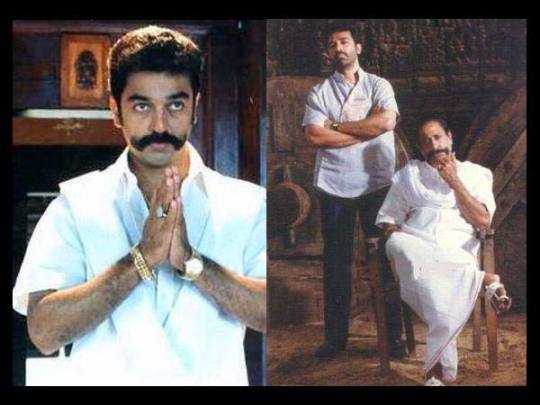
‘Thevar Magan’ (‘Son of Thevar’) (1992) Directed by Bharathan Written by Kamal Haasan Starring Kamal Haasan, Sivaji Ganesan, Gouthami, Revathy, Nassar
I do not recall the name but one prominent film critic associates the origination of the persona (or the archetype) of the mustachioed, aruvaal wielding Tamizhan in cinema to Kamal Haasan’s performance in Thevar Magan.
The film is still fresh, powerful and a poignant representation of a world and a culture outside the walls of Madras.
I’d Iike to give this essay a bit of structure by drawing 3 overarching points and building my analysis thereon up.
1. The Story and Themes
‘A westernized young man returns to his village. Unaware of feuds, customs and their implications he pulls himself into a world of sabotage and pain. When it was time, he sacrifices his love and his dreams for the sake of the people for whom his family has been responsible for centuries.’
This is Thevar Magan in a nutshell. It is an extraordinary take on the lives and the dreams of Young India in relation to the history and culture that fuels its villages.
a. Karma Yoga

At a very high level (at least for me) is the idea that the film is an interesting exposition on the concept of Karma Yoga.
Karma Yoga or the Yoga of Action is a form of Yoga based on teachings in the Bhagavad Gita. Karma Yoga is the process of achieving perfection in selfless action. It is primarily the practice of selfless service to humanity whereby a spiritual seeker attempts to give their actions selflessly without hoping for merit, fame or glory.
Kamal Haasan’s character, Saktivel, is the seeker in the context of the film. He becomes a vignette for what a modern Karma Yogi ought to be as every action he takes in the film is one keeping in mind the unity and the prosperity of his people. I think a film is a terrific canvas where one can paint ideas of sophisticated theology or philosophy, making heavy-duty concepts extremely accessible to the masses.
b. The Greater Good

Another concept we can find in the film is the concept of the Greater Good in the context of love. Love, I think, is an interesting lens through which one might view the Greater Good because it really goes against the idea of Man being a selfish, lust-driven, seeker.
Along similar lines the film also makes a claim that ego is not necessarily an evil cognitive tool - it’s, in fact, a wonderful apparatus for one to hold on to his/her self-respect and word of honor - concepts which are core ideologies in any walk of life.
Another bit of the film that caught my attention with respect to the Greater Good is one involving Saktivel’s hair. Westernised and well-initiated in the art of punk, Kamal Haasan’s mullet represents the Young Indian’s propensity in absorbing and applying the western notion of cool. But when the time comes that which is modern and that which is cool must not stand in the way of doing that which is right. In the film it involves Saktivel sacrificing his punk appeal to be reborn as the leader and caregiver of his community.
c. Culture and Community

The film received a bit of backlash upon its release because people thought that the film painted a picture of the Thevar community in Tamil Nadu as a bloodthirsty lot. However, in my opinion, the film does great justice and respectfully sheds light on the history and accomplishments of the Thevar community. From being the first recruits in Subhash Chandra Bose’s Indian National Army to being responsible for the welfare, prosperity, and justice-related issues in the village, the story is in fact very educative about the Thevar community’s involvement in social progress. I think its very unfair that social activists spotlight one aspect of the story over the cumulative exposition.
There is a debate among viewers on what the film truly intends on representing. A faction of viewers believes that the film is a treatise on violence and bloodshed. Another faction believes the film is a celebration of the Thevar community’s way of life. But by far the most interesting thematic opinion revolves around the concept of a son’s reluctance to enter and take control of the family business upon the father’s passing; a theme very wonderfully explored and inspired by Francis Ford Coppola’s ‘The Godfather’.
2. The Cast
Thevar Magan released in what may have been the greatest decade in Tamil Cinema - the decade of Kamal Haasan. This was the decade that not just Tamil Cinema, but Indian Cinema, by and large, caught a glimpse of Kamal Haasan’s artistic genius. He performed the roles of a writer, actor, producer, dancer, singer (and probably even that of a director) cementing his genius as one of India’s greatest ever Artists.
Kamal Haasan was able to play the role of Saktivel so convincingly because he understood the climate and the nature of the characters who were involved in the story and their relation to Saktivel.
Apart from the performances of Kamal Haasan, Gouthami and Revathy I think the film really played to the strengths of two of the finest actors in the history of Indian Cinema - Sivaji Ganesan and Nassar.
a. Sivaji Ganesan
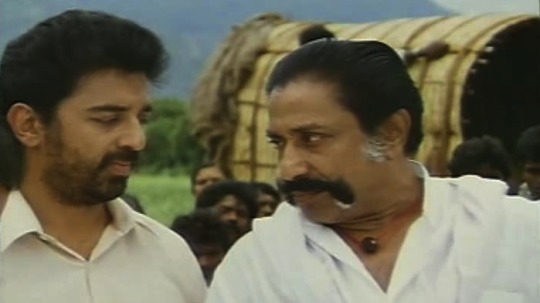
The legendary Sivaji Ganesan’s role in the film was brief but the character’s impact echoed throughout the film. The Godfather metaphor makes the point clearer - although The Godfather’s main protagonist is Michael, Vito Corleone’s reputation, power, and influence looms over Michael and the story. The same is true of Periya Thevar’s impact on the story.
b. Nassar
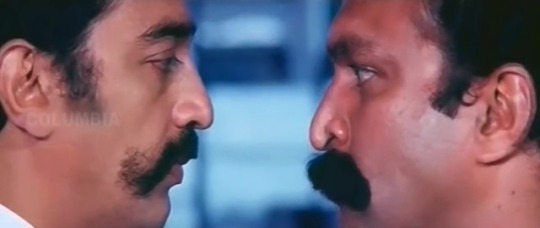
In my opinion, it was Nassar’s performance of the revenge-crazed Mayandi Thevar that stole the show. Nassar belongs in the pantheon of the great character actors in Indian Cinema. His ability to not only transform but also to seep into the marrow of his character makes his brand of acting a craft of unmistakable genius.
With a profoundly misdirected sense of justice and fairness, Nassar’s character walks the thin line between ethics that are amoral and immoral. We, the viewers of cinema and participants of culture at large, know that amoral and immoral ethics are wrong but Mayandi’s bullheaded, take-no-prisoners attitude is something all of us secretly desire and appreciate within those dark corners of our heart. Failure despite his best efforts makes us feel sorry for Mayandi Thevar. That ability, to generate pity (or empathy) despite being on the wrong side of justice is where we can see the genius of Nassar’s performance.
3. The Cinematic Experience
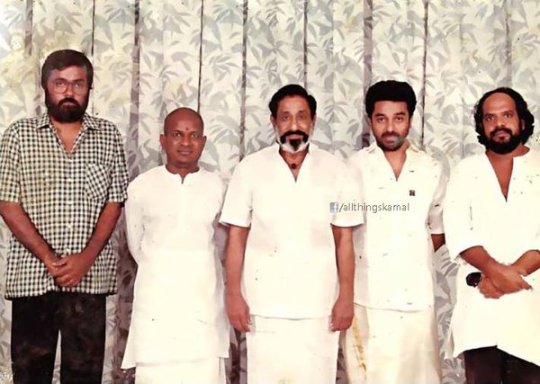
The dialogues, the casting and the environ of the film were masterfully compiled. That’s what gives the film a feeling of absolute completeness. The rurality of the Tamil language coupled with the apt interpretation of the Thevar mindset and body language, Thevar Magan gives you an unadulterated, authentic, rural Tamil Nadu experience.
a. The Cinematography
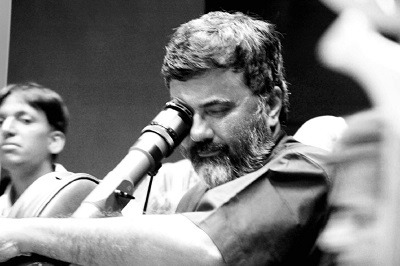
When I close my eyes and think the words ‘Thevar Magan’, a blue sky and a lush, rural greenery occupy my consciousness.
Living in an urban area, heat islands, rude autowallahs, and unforgiving traffic rules our day to day lives. Sure, some people love this chaos and the hustle-bustle, but a lot of us inherently crave sanctuary and tranquility that a countryside represents.
What I find really interesting in P.C. Sriram’s cinematography is the subtlety in his mastery over Paradox. The great cinematographic theme of the film is that of Paradox because the story moves counterintuitively to the richness and the serenity of the visual. It almost imposes upon the viewer the idea that even in a land of peace and quiet rivers of blood could most definitely flow.
The locations at which the film was shot are not just aesthetically well-thought but often times plays the silent role of moving the story forward.
b. The Music
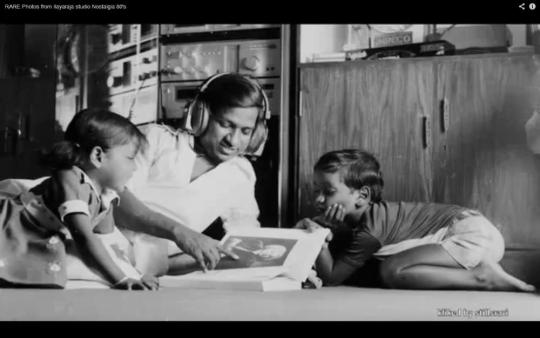
In terms of sound, Ilaiyaraaja’s score and soundtracks are still held in high regard among the masses. It can be said that the maestro managed to capture the complete spectrum of life that goes on in the film sonically.
To understand and appreciate the value and impact of Ilaiyaraaja’s musical contributions to the film we need to walk down the same path the maestro intuitively takes while composing - and this path can most suitably be described in terms of a Chinese Landscape Painting.
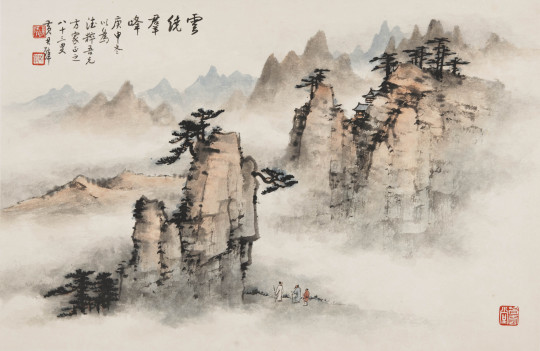
The small human figures depicted against crags, rivers, and mountains are portrayed thus so as to inspire the viewer to focus on the man and then try and imagine the surrounding landscape through his eyes. And this is how Chinese Paintings are designed to be read.
While a painting refers to that which is visual, Ilaiyaraaja employs the same organizing principles to deal with the realm of sound.
The crags, rivers, and mountains are replaced by lyric, melody and rhythm.
Ilaiyaraaja is the first rasika of the filmmaker. His ability to empathize deeply with the characters and their arcs in a story have yielded some of the greatest soundtracks in Indian Cinema. And Thevar Magan is no exception.
There is an element of sophisticated minimalism in Ilaiyaraaja’s work on the film. The most dominant characteristic of all the tracks on the film is the combination of balance and emphasis given to meter, melody, and rhythm.
c. The Notion of ‘Complete’
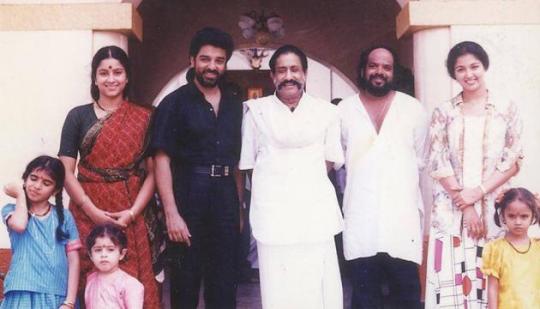
And finally, there are people who claim that Thevar Magan is the most complete film amongst all of Kamal Haasan’s work. While I am horribly one of those people who hasn’t yet watched Kamal’s entire body of work, I can quite understand what is implied by the term ‘complete’.
This notion of ‘complete’ emerges from a powerful idea of the story being structured in the form of a novel at its heart. According to Orhan Pamuk, “In well-constructed novels, everything is connected to everything else, and this entire web of relations both forms the atmosphere of the book and points towards its secret center.” Thevar Magan performs the same functions in an audio-visual format.
In conclusion, I’d like to say that I have done my best to understand what forms the atmosphere of the film as well as made several attempts to point towards what may be the secret center of the film.
*Thevar Magan was India’s official entry to the 65th Academy Awards in the Best Foreign Language Film category. Unfortunately, it was not nominated.

This work is licensed under a
Creative Commons Attribution-ShareAlike 4.0 International License.
#kamal haasan#thevar magan#thefilmreview#film#movie#review#sivaji#ganesan#nassar#tamil cinema#cinema#gouthami#revathy#ilaiyaraaja#p.c. sriram#cinematography#music#direction#soundtrack#artist#art#bharathan#culture#community#india#tamil nadu#indian cinema#academy awards#chinese landscape#painting
0 notes